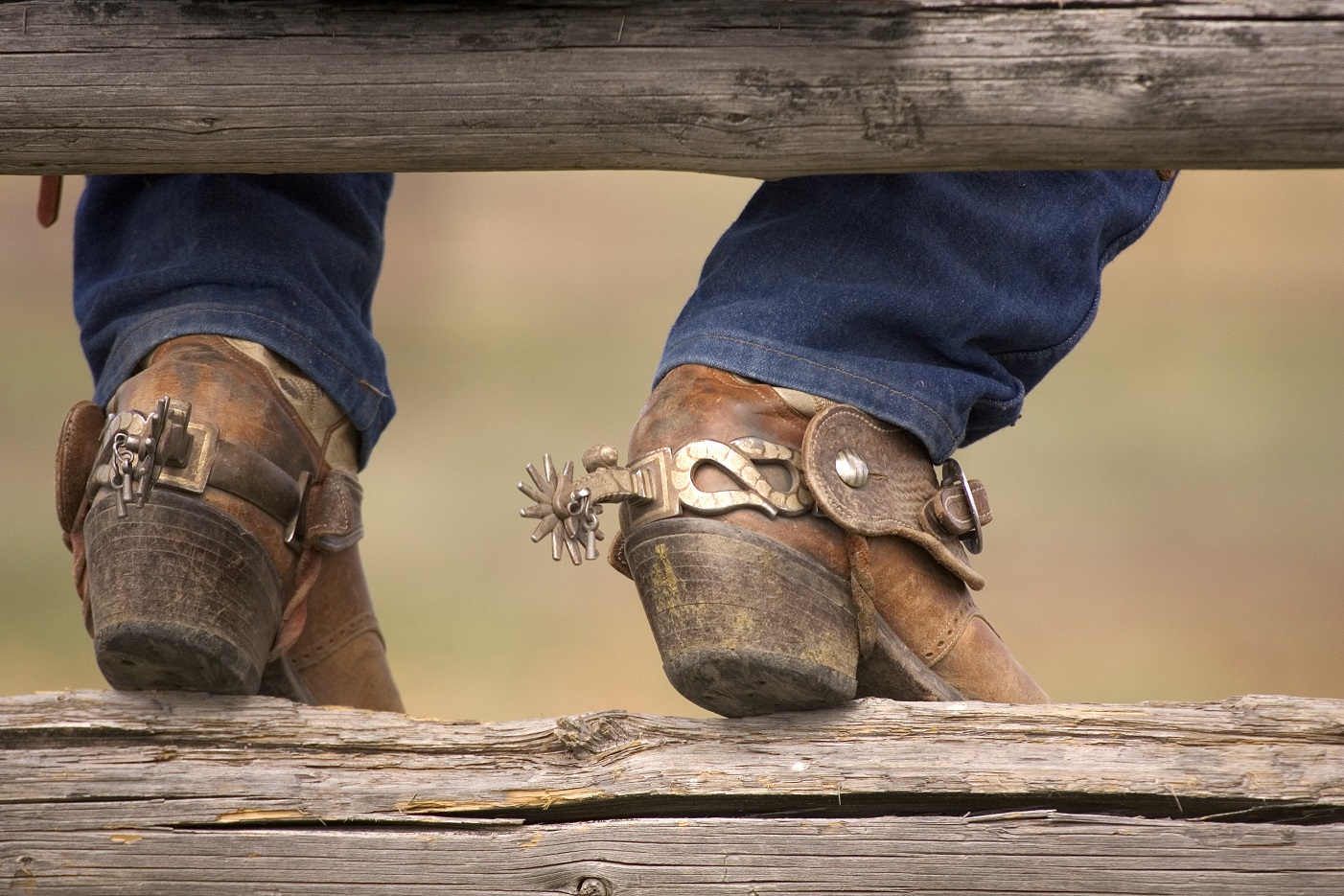Cowboy Boot Heel Replacement
by James Miller
The heel of our cowboy boot is essential when it comes to cowboy style. The question that we keep on asking ourselves is when do we replace our heel sole? One of the indications that shows cowboy boot replacement is needed is when it becomes slippage, or its height reduces drastically.
When you also notice some holes in the heel, then it means replacement is required. To replace your cowboy heel, you need to check its length, thickness, and width of the heel boot and compare to that when it is new.To get the best heel that fits your cowboy boot, measure the length, width and thickness. It may be hard to get the perfect replacement heel that fits your cowboy boot. However, the best way, in this case, is to get the large heel and then trim the excess.
Contents
Steps of Replacing The Old Heel
-
Removal of old heel
With the use of pliers or a pair of dulled end cutter style wire, try to remove the worn-out cowboy boot heel gently. As you gently pull the heel, push down any leather material that might want to come out with the heel. Remove all the nails from the heel if they are available.

-
Sanding the heel bases
Using a belt sandpaper, remove all the old glue from the soles. Sand well the bases of the heel to make it flatten. To ensure you have done it perfectly, use an 80 to 100 grit to avoid overdoing the process. When sanding, ensure you hold the block and not interfere with the heel edges.
-
Glue application
Once you have done good heel sanding on the surface, mark the heel areas and apply glue at the bottom marked areas. Allow the glue to dry for about 15 minutes. Please do not push the new heel into the bottom area; allow it to dry so that it can have a good grip.
-
Rough the new heel
Using sandpaper, make the bottom of the heel rough before you apply glue to it. This ensures that the bottom side grips glue well, and it will fit well to the area market. Allow the glue to dry for about 15 minutes before you connect the two.
-
Apply the new heel
Place the new heel gently on the area marked at your sole. Ensure you have centered the heel well at the base. Avoid using a heel breast in lining up the cowboy boot heel because it may make the new heel overlap forward. Apply some pressure on the surface for about 2 minutes.
The glue will quickly dry and stick at the bottom of the sole. It is good to ensure that you have lined it perfectly and press it hard to stick well. Remember, there are some holes around the soles you need to trim, so you need to do it with great care.
-
Nail the cowboy boot heel with the soles
Once you have trimmed the holes around the heel with a knife, you need to secure the heel by nailing it with nails of about 1.3 to 2.2 cm long. To do this perfectly, hold your boot steadily against a strong post and then gently put the nails. Ensure that you have not affected the boot inside as you carry out this process.
-
Trimming excess rubber heel sole
As we mentioned using a cowboy boot heel that is a bit larger than the sole is good. Once you have secured the heel, trim the excess rubber using a sharp blade to fit the sole at the edges. To make it perfect, you can sand the edges of the rubber once you have cut to have a smooth edge.
-
Inside cowboy boot check
Once you have applied sandpaper on the sole and heel, you need to check inside the boot if the nails are out. Ensure that they are not coming out at the heel place, and in case they are, you need to bend them or cut if possible. Do this before you return the boot insole. If you do this you the boot heel will behave perfectly.
How To Fix Heel Slippage In Cowboy Boots?
Heel slippage is one of the phenomena that some people experience with their cowboy boots. This is where you find out that your heel is slipping off from the cowboy boot for some reasons, like using a cowboy boot that is wide on the heel, wearing a wet cowboy boot, using a new cowboy boot, and also using cowboy boots that haven’t broken in.
There are various methods you can use to stop this heel slippage. The process used depends on the nature of the boot.
When the heel of the cowboy boot is wide than your heel,
When you find out that your cowboy boot has a wider heel that doesn’t fit with your heel, you realize that you can’t tie your boot laces. However, there are two methods you can use to solve this problem.
Use heel pads, heel grips, heel cushions
These products are designed to create a cushion at the contact area of your heel and that of the cowboy boot. They will cover the wide area of the cowboy boot that your foot has not covered. The method is also vital for those that experience heel pains. The heel pads also support and treat heel pain, tendon heel inflammation, heal dry, cracked heels, etc.
Use thick socks
Using a thick pair of socks is another cheap method of addressing a cowboy boot with a wider heel than your heel. The thick socks help your feet to fit onto the boot without experiencing any slippage. They increase the area of the contact and cover the space.
When the tip of the cowboy is longer than your feet
Most people with short feet prefer to use cowboy boots with long insoles and pointed toes to conceal their short feet. The problem, however, with this is that the boot will be prone to heel slippage. You can address this with
Inserting soft objects into the cowboy boot toe box
Insert some soft objects like toilet papers, cloths, and other soft material to the tip of the cowboy boots. This will help you to have a perfect foot fit and stop the heel from slipping. Avoid using complex objects because they will affect not only your feet but also the cowboy boots.
Use a heel pad, heel grips, or heel cushion.
As we have seen, these products can fill the toe tip space and make your feet shorten the distance from the tip of the boot with your feet. This will help to reduce the slippage.
The Other Methods of Stopping Cowboy Boot Heel Slippage
Break in the cowboy boots
Cowboy boots that are not broken in are prone to heel slippage. It happens often, and therefore you need not worry about it. A new cowboy boot takes up to 3 weeks to have a complete break-in.
At this period, you will experience some heel slippage, and the heel will slide more, especially those with a heel of ¼ to 3/8 inches. If you want to speed the break-in process, you can use a leather stretcher or leather conditioner.
Use non-slip socks
The use of non-slip socks is one of the unique ideas you need to apply to stop heel slippage. The socks make the feet firmly cling on the sole of the cowboy boots like glue, and hence you won’t experience any slippage. Despite the fact that they are thin, they are better than wearing thick socks.
Choose the perfect boot size.
Although this method is not ideal for those who have already purchased their boot, it is good to know it. You are experiencing a slippage because you are using a cowboy boot with the wrong size. So, if you need not experience such, always consider buying a boot with the correct size.
Keep your cowboy boot dry.
Wearing a wet cowboy boot is also another big reason why you are experiencing heel slippage. To end this, you need to know the basic method to keep your boot dry inside. For instance, if you have cleaned your boot, leave them in an open place for some hours to dry. You need to have some good pairs or carefully dry your boot with a boot dryer in a rain or snow season.
Final Thought
Do you know wearing a slippage cowboy boot heel is so disgusting? Of course, yes; therefore, it is good to stop the slippage by using the various methods we have mentioned. The method does not only end slippage but also boosts feet comfort and makes them healthy.
The cowboy boot heels that have worn out also need to be removed. The process of removing the heels is so easy. In this article, we have highlighted the procedure of removing the old heels comfortably. The best thing with cowboy boots is when you have confidence in them, and you walk in a swagger like a true cowboy.
 |
 |
 |
 |

About James Miller
James Miller is a dedicated individual based in the vibrant city of San Francisco, CA, USA. His unwavering passion lies in the realm of construction, where he finds fulfillment in exploring and documenting various facets of construction equipment and processes. A graduate of the University of California Merced, James holds a dual degree in mechanical and electrical engineering, which has equipped him with a solid foundation in technical knowledge.
With a keen eye for detail and a knack for articulation, James has channeled his enthusiasm into writing about the intricacies of construction gear and methodologies. His insightful writings offer valuable insights to both industry professionals and curious enthusiasts, shedding light on the machinery and techniques that shape the built environment.
James Miller's educational background in mechanical and electrical engineering lends credibility to his work, allowing him to delve into the technical nuances of construction with precision. His passion for sharing knowledge and fostering understanding in the construction field is evident in his contributions, making him a respected voice in the industry.
Thoughts on "Cowboy Boot Heel Replacement"
 |
 |
 |
 |
Get FREE Boots Gifts now. Or latest free toolsets from our best collections.
Disable Ad block to get all the secrets. Once done, hit any button below
 |
 |
 |
 |